
How to Buy Satellite Imagery
Satellite imagery has become one of the most powerful tools for understanding our world, capturing every detail of Earth from
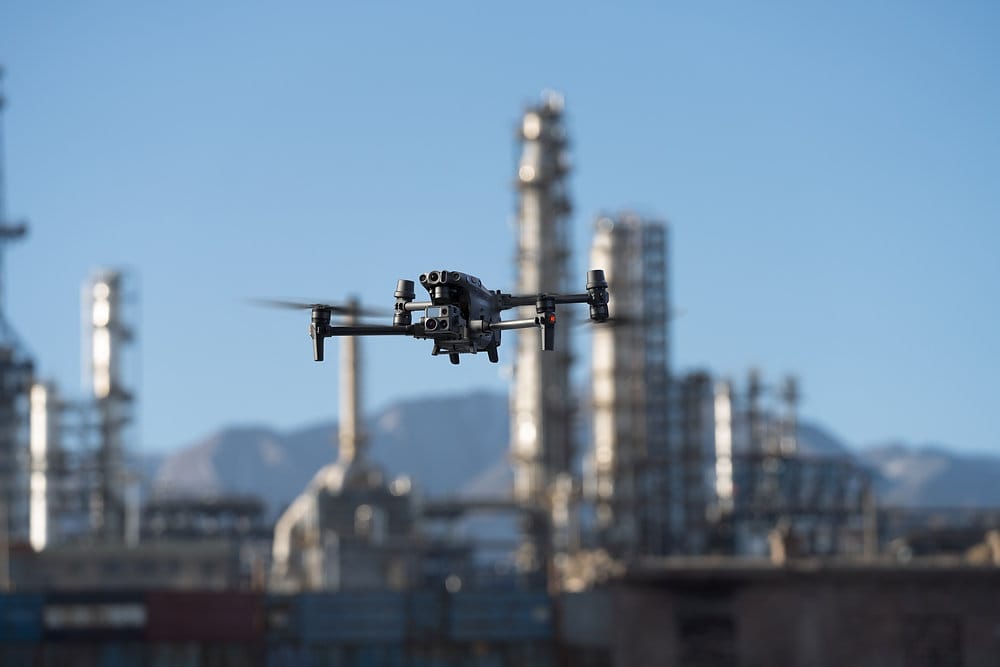
Drones are now an essential tool in the Saudi oil and gas sector because they help companies inspect pipelines, refineries, tanks, and offshore assets faster and with fewer risks. The demand is increasing as operators look for safer ways to manage high-temperature facilities and large pipeline corridors. Thermal imaging is especially important because it identifies leaks, overheating, insulation failure, and pressure-related issues before they develop into system failures. This type of monitoring supports predictive maintenance and helps teams act early.
Saudi Arabia’s Vision 2030 encourages digital transformation, and many energy companies are shifting from manual inspections to remote drone operations to meet these goals. Drones handle work that previously required scaffolding, shutdowns, or human entry into confined spaces. As a result, companies complete inspections in less time and with better data accuracy.
XRTech Group is a leading provider of industrial thermal drones in Saudi Arabia, offering enterprise Drones designed for harsh climates, long-distance transmission, and continuous monitoring. Our drone solutions match the needs of the region because we support high temperatures, long flight times, and automated workflows. This blog reviews the top 10 thermal imaging drones for oil and gas inspection and pipeline monitoring in Saudi Arabia, and explains how these platforms support safer and more efficient operations. Contact us now to get free consultation for Oil & Gas Drones in Saudi Arabia
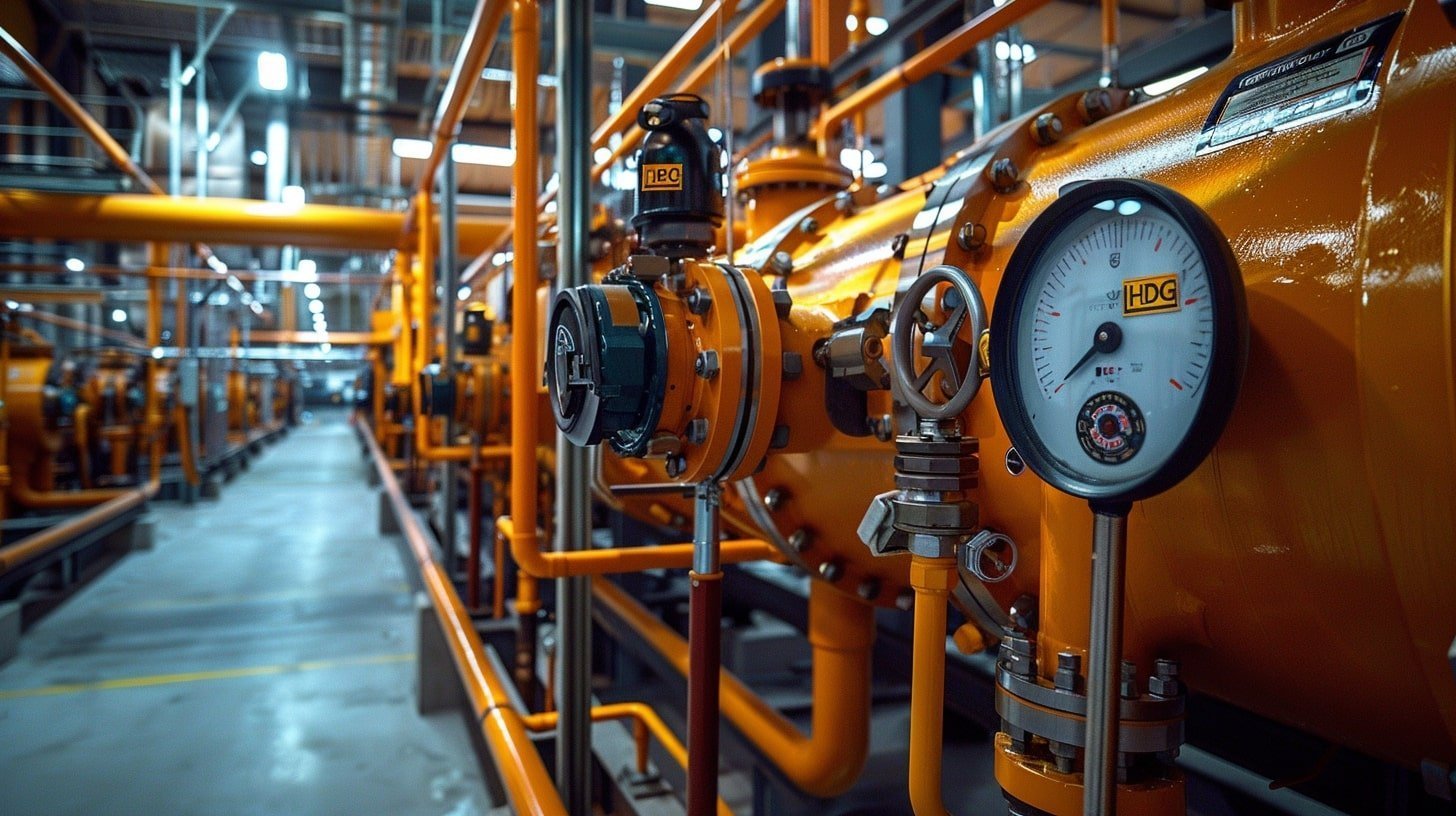
Thermal imaging drones play a major role in oil and gas drone inspections in Saudi Arabia because they work safely and efficiently across harsh climates, remote desert sites, and large industrial facilities. These drones collect detailed thermal data that helps detect leaks, hotspots, and structural issues that are hard to spot through manual methods.
Saudi Arabia experiences high desert temperatures, and many refineries and pipeline routes operate in environments that exceed 45 to 50 degrees Celsius during peak seasons.
Thermal Imaging Drone for Oil and Gas in Saudi Arabia platforms like the Matrice 350 RTK and Autel EVO Max 4T are built to operate reliably in these conditions.
These oil and gas drones maintain stable flight performance, and they continue capturing accurate thermal data even when infrastructure is exposed to extreme heat.
This allows Oil & Gas operators to track thermal anomalies, insulation failures, and overheating equipment without delays caused by heat restrictions.
Oil and gas facilities in Saudi Arabia work continuously, so inspection drone systems must run around the clock.
Thermal drones detect heat signatures instead of visible light, which means they support day and night pipeline inspections.
Night flights are often more effective because thermal contrast is higher.
This supports flare stack monitoring, pressure vessel checks, and continuous surveillance of high-risk zones.
Saudi Arabia manages one of the world’s longest and most complex oil & gas pipeline networks spanning thousands of kilometers. Many sections are located in remote desert areas where access roads are limited.
Drones cover long distances faster than ground teams.
They reduce the time needed to locate leaks, monitor temperature changes, and verify pipeline integrity across isolated locations.
Thermal sensors help identify subsurface temperature patterns that may indicate hidden leaks or pressure fluctuations.
This allows operators to act early and reduce the impact of failures in remote regions.
Thermal Oil & Gas drones for inspection enhance safety across sensitive assets because they reduce the need for human entry.
No human entry into hazardous spaces such as storage tanks, furnaces, chimneys, or confined columns.
No need for work at height during pipe rack inspections or flare stack checks.
As a result:
Oil & Gas companies in Saudi Arabia save up to $15,000 per tank inspection by avoiding scaffolding, rope access, and shutdowns.
Pipe rack inspections become up to 60% faster because drones reach elevated structures instantly.
This supports safer operations, fewer disruptions, and reduced risk exposure for inspection teams.
Using oil and gas drones in Saudi Arabia helps companies reduce operational costs significantly.
Thermal drone inspections cut inspection costs by 40 to 50 percent compared to manual inspection methods.
Saudi Aramco data shows tank inspections that previously required weeks can now be completed within hours, even while systems remain online.
This reduces downtime, improves planning, and supports faster maintenance cycles.
Thermal imaging drones for Oil & Gas collect high-quality data from multiple sensors at the same time.
Visual imaging
Thermal imaging for leaks and hotspots
UT (Ultrasonic Testing) for thickness and corrosion
LiDAR for precise structural measurements
These combined layers help detect early warnings such as:
Thermal hotspots
Corrosion zones
Insulation breakdown
Pressure irregularities
Gas leak signatures
Engineers receive accurate, geo-referenced inspections that support predictive maintenance and long-term asset integrity planning.
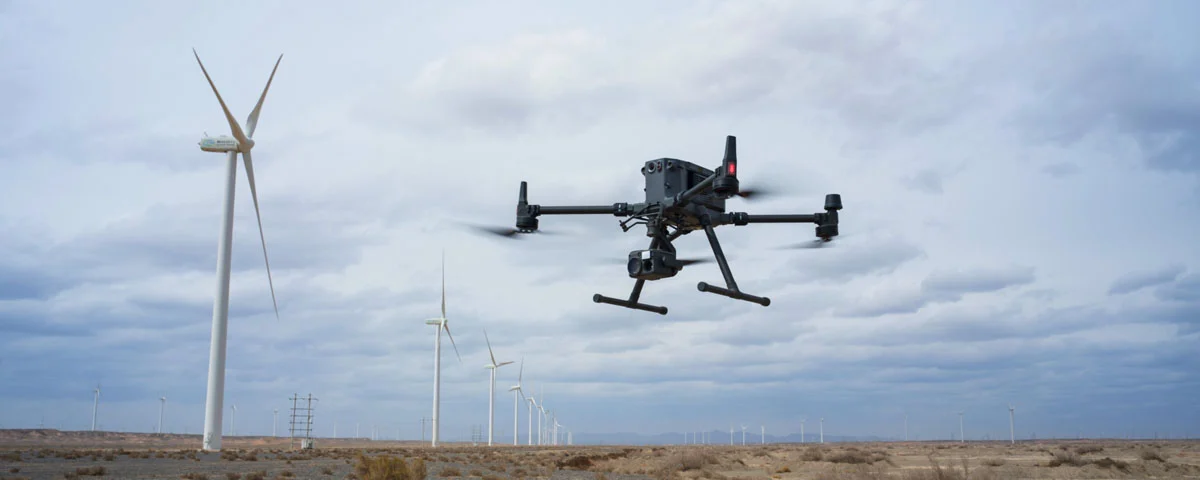
Choosing the right Thermal Imaging Drone for Oil and Gas in Saudi Arabia requires a clear understanding of the technical features that support safe, accurate, and continuous inspection. Oil and gas sites operate in high temperatures, large outdoor areas, and hazardous zones, so the drone must handle industrial workloads without interruption. The points below outline the most important features to consider when selecting oil and gas drones in Saudi Arabia for pipeline monitoring, refinery inspection, leak detection, and offshore operations.
A minimum thermal resolution of 640×512 ensures clear temperature readings across pipelines, tanks, and pressure vessels.
Higher resolution supports accurate leak detection, insulation failure checks, and hotspot identification.
This level of clarity is essential in Saudi Arabia where heat gradients can change quickly during peak temperatures.
A high-resolution thermal sensor also improves accuracy for early warning detection across long pipeline routes.
Oil and gas inspections often need multiple sensors working together.
The drone should support visual, thermal, LiDAR, zoom, and ultrasonic payloads.
Platforms that allow multi-payload configurations help capture detailed engineering-grade data in a single flight.
This reduces mission time and supports complete asset integrity monitoring.
Energy facilities cover large areas, and long flight time is essential for efficient coverage.
40 to 55 minutes of flight time minimizes battery changes and reduces mission downtime.
Longer endurance supports uninterrupted pipeline inspection and large refinery surveys.
This is especially useful in remote desert locations where access to landing zones is limited.
Radiometric thermal sensors capture temperature values for each pixel.
This allows engineers to measure precise temperature differences across assets.
Radiometric data is useful for identifying hotspots, insulation degradation, and equipment overheating.
It supports measurement-based decisions rather than visual interpretation alone.
Thermal sensitivity determines how well a drone detects small temperature variations.
Higher sensitivity helps identify minor leaks or surface anomalies early.
This is important for high-pressure pipelines and older assets exposed to extreme heat.
Better sensitivity improves reliability in predictive maintenance programs.
Automated mission planning helps teams run repeated inspection routes with consistent results.
Preprogrammed flight paths ensure every inspection covers the same coordinates.
This improves trend analysis and supports digital twin workflows.
It also helps reduce human error during routine missions.
Real-time thermal imaging and live streaming are essential for critical inspections.
Operators can spot leaks or anomalies immediately.
Live metrics support decision-making across control rooms and field teams.
This is useful during emergency response or flare stack monitoring.
Oil and gas drones in Saudi Arabia must work reliably in desert heat.
A range from minus 20 to plus 50 degrees Celsius supports stable flight across the country’s climate zones.
Drones with proper heat management systems provide more accurate thermal readings.
This ensures continuous operation during peak summer temperatures.
Industrial inspections often involve dust, wind, and offshore conditions.
IP45 to IP55 ratings help drones resist dust, sand, and light rain.
Higher protection levels allow stable operation near flare stacks and refinery emissions.
This improves longevity and reduces risk of sensor damage.
Oil and gas operations require structured data for engineering analysis.
The drone must integrate with GIS systems, cloud dashboards, and asset management software.
Compatible data formats simplify reporting and long-term inspection tracking.
Integrated data improves workflows across maintenance and safety teams.
Autonomous monitoring is becoming common in Saudi Arabia’s energy sector.
Drone in a Box systems enable automated takeoff, landing, charging, and mission execution.
These stations support twenty four hour surveillance without onsite pilots.
This is essential for long pipeline routes, offshore facilities, and perimeter security.
Automated battery stations reduce downtime between flights.
Swapping systems allow continuous inspection during long operational windows.
This is useful for emergency response and continuous thermal monitoring.
It supports faster deployment and higher inspection frequency.
Safety features are essential when working near structures.
Multi-directional obstacle sensing prevents collisions with tanks, pipe racks, or towers.
Fail-safe systems improve reliability during complex refinery missions.
This reduces risk in tight industrial environments.
Thermal drones designed for oil and gas drone inspections in Saudi Arabia must handle extreme heat, remote desert distances, and complex refinery structures. The following platforms are widely used for pipeline monitoring, flare stack inspections, leak detection, and asset integrity work. Each drone supports high-resolution thermal imaging and operates reliably in temperatures common across Saudi industrial zones.
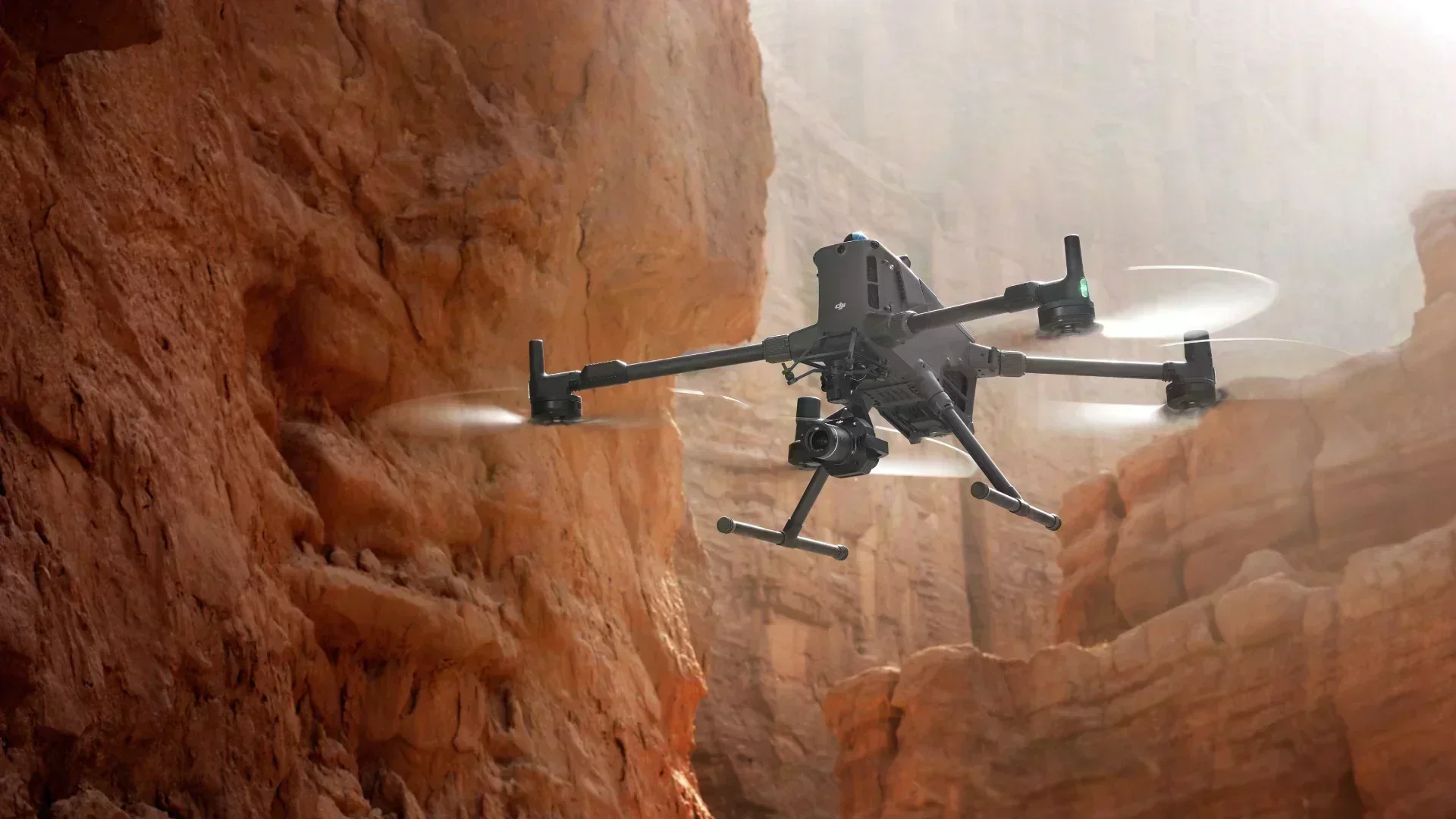
The DJI Matrice 400 is a top choice for Thermal Imaging Drone for Oil and Gas in Saudi Arabia because it combines long endurance, high payload capacity, and strong weather protection. It works across refinery zones, offshore platforms, tank farms, and large desert pipeline routes. Buy DJI M400 in Saudi Arabia at 27957.63 Riyals.
Key Specifications and Features
IP55 weatherproof rating supports dust-heavy and coastal environments.
59-minute flight time allows longer inspection missions with fewer landings.
Up to 6 kg payload capacity supports thermal, LiDAR, zoom, and UT inspection tools.
Operates reliably up to 50°C, suitable for Saudi summer conditions.
Ideal for flare stack inspection, offshore structures, and high-temperature refinery areas.
Fully compatible with the Zenmuse H30 Series for advanced thermal and zoom imaging.
This drone is built for industrial operations that require stable performance and accurate thermal data collection.

The DJI Matrice 350 RTK is widely used for high-accuracy oil and gas drone inspections in Saudi Arabia because it supports multi-sensor payloads and delivers engineering-grade precision.
Key Specifications and Features
Triple payload support enables thermal, visual, and LiDAR sensors during a single flight.
RTK positioning delivers centimeter-level accuracy for pipeline mapping and structural analysis.
55-minute flight time provides wide-area coverage in each mission.
Designed to operate in high-heat refinery and desert environments.
Supports the H20T thermal camera, which delivers 640×512 thermal resolution and long-range zoom.
This platform fits inspection tasks that require detailed thermal mapping and precise measurement.
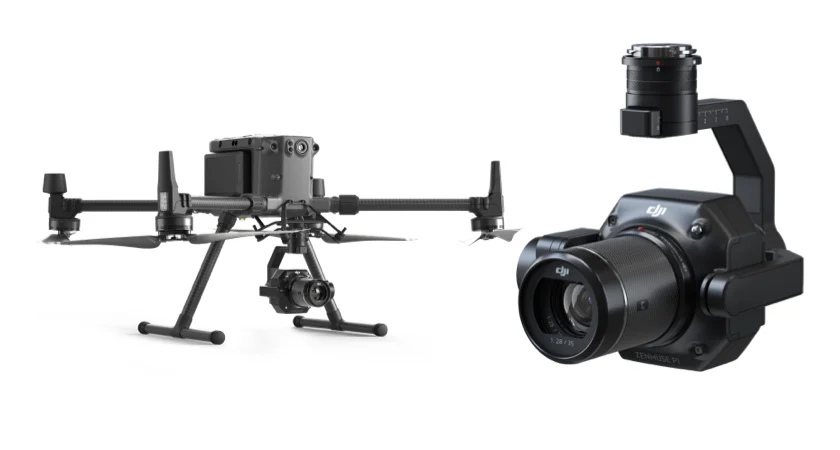
The DJI Matrice 300 RTK is a reliable drone used across global energy facilities. It supports multiple thermal and NDT payloads, making it useful for advanced inspection requirements.
Key Specifications and Features
55-minute maximum flight time for long missions.
Works in extreme temperature ranges suitable for desert operations.
Used worldwide for pipeline monitoring, tank inspection, and flare stack surveillance.
Supports UT (Ultrasonic Testing) modules and specialized NDT sensors for corrosion and thickness measurements.
Its versatility makes it a strong option for continuous industrial inspection programs.
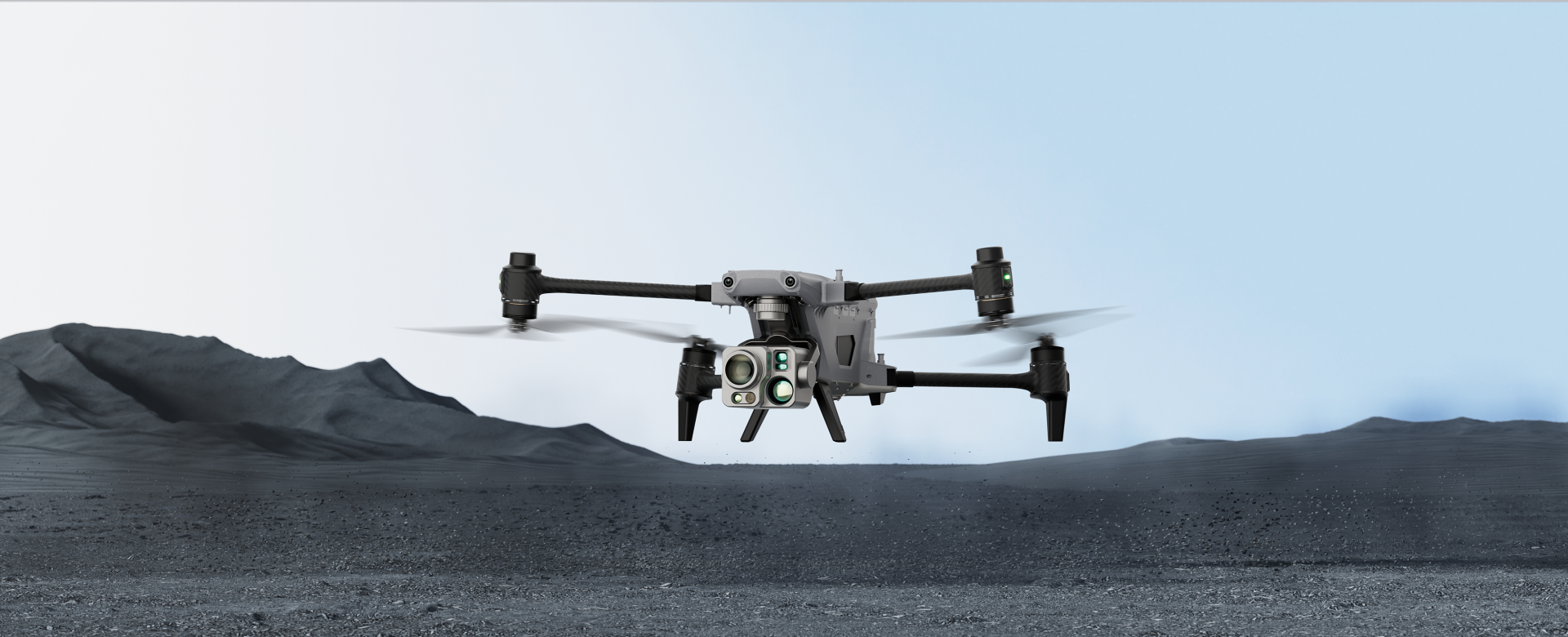
The Autel ALPHA is optimized for long-distance missions across remote Saudi pipeline corridors where ground teams have limited access.
Key Specifications and Features
56× hybrid zoom paired with 640×512 thermal for long-range thermal inspection.
15 km transmission range for remote desert operations.
50-minute flight time helps cover long pipeline segments in fewer missions.
Designed for wide-area surveillance and remote asset monitoring across oil fields.
Its strong transmission and long endurance make it ideal for extended corridor patrols.

The DJI Matrice 30T is best for Oil & Gas Inspections offering a compact design while still delivering industrial-grade thermal capability. It suits teams that require fast deployment in tough conditions.
Key Specifications and Features
640×512 built-in thermal camera with optical and hybrid zoom.
IP55 rating protects against dust, heat, and rain.
Portable and easy to transport for field teams working across refineries or pipelines.
Operates in rain, dust storms, and up to 50°C heat, which matches Saudi climate requirements.
It is useful for maintenance teams that need a mobile inspection tool.
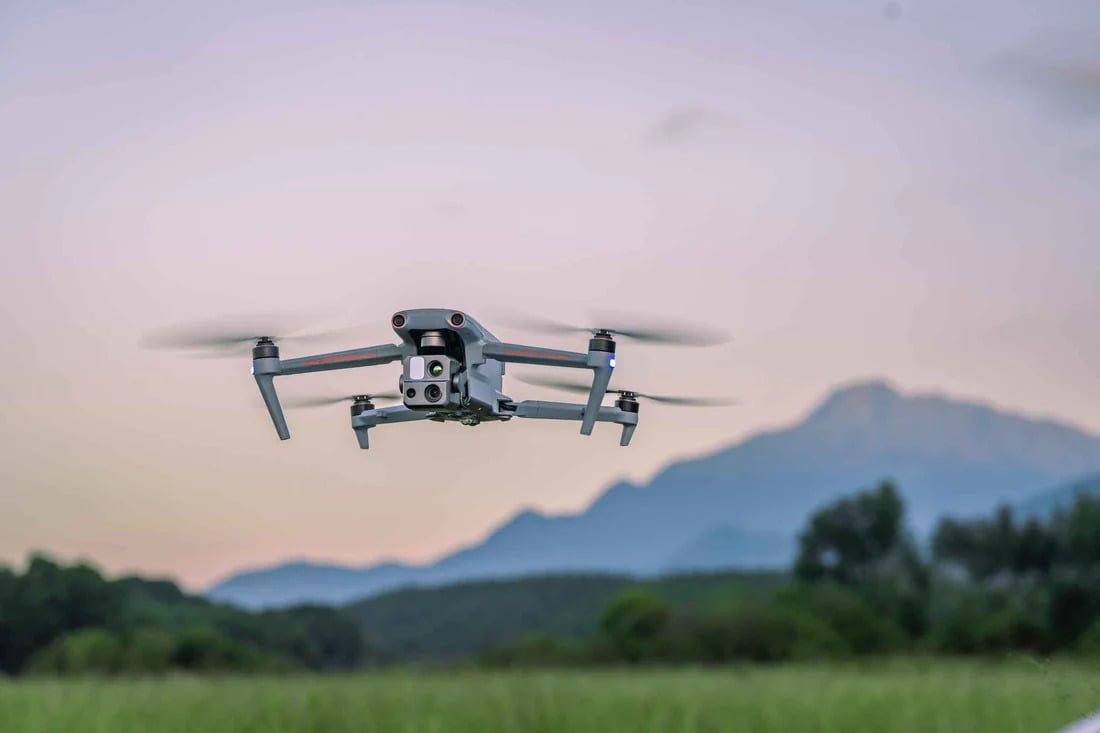
The Autel EVO Max 4T is engineered for complex Oil refinery structures and GPS-challenged sites. Its thermal system and AI navigation support Oil and Gas tight-space inspection.
Key Specifications and Features
640×512 thermal camera with multi-sensor imaging.
Strong AI navigation for complex industrial environments.
Anti-GPS-denial capabilities for metal-dense refinery zones.
42-minute flight time fits medium to large inspection missions.
Ideal for tanks, pipe racks, boilers, and structural inspections.
This drone is well suited for confined or cluttered spaces.
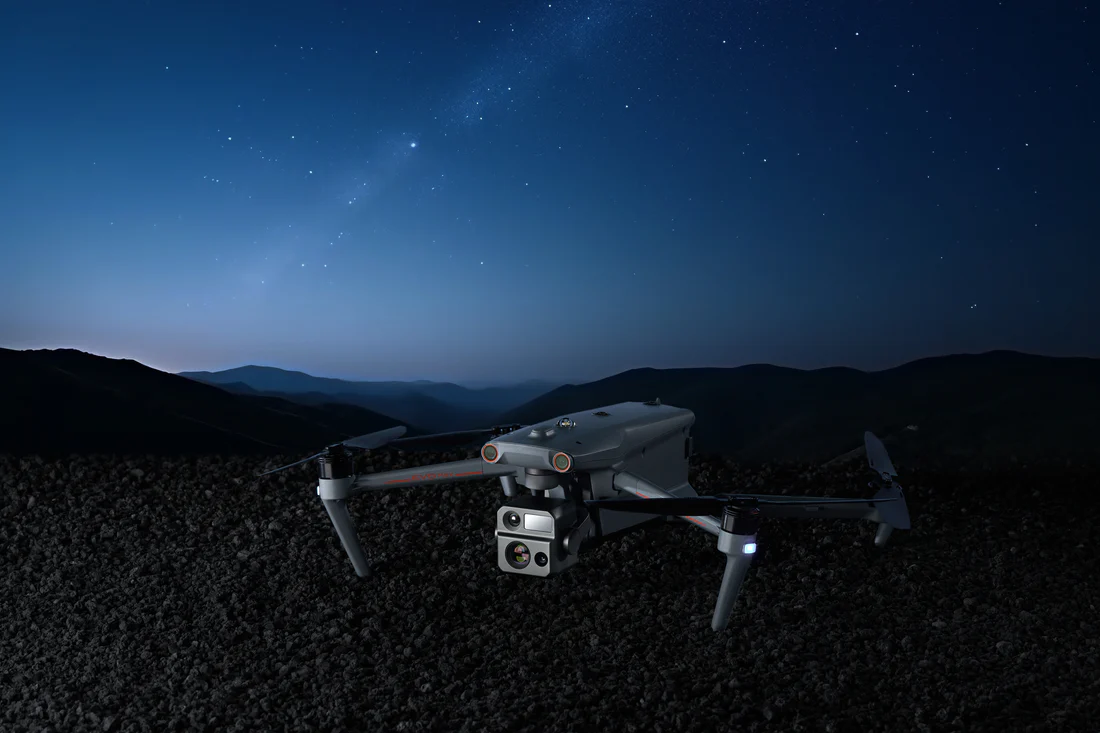
The EVO Max 4N is built for continuous Oil & Gas monitoring in Saudi Arabia, especially during nighttime or low-light conditions common in long pipeline patrols.
Key Specifications and Features
Dual imaging with thermal camera and low-light starlight sensor.
Ideal for nighttime pipeline security, flare stack checks, and facility patrols.
Works in low-GPS environments, including refineries and metal-dense zones.
Improved situational awareness for perimeter and remote site monitoring.
This model is used when non-stop twenty four hour inspection is required.
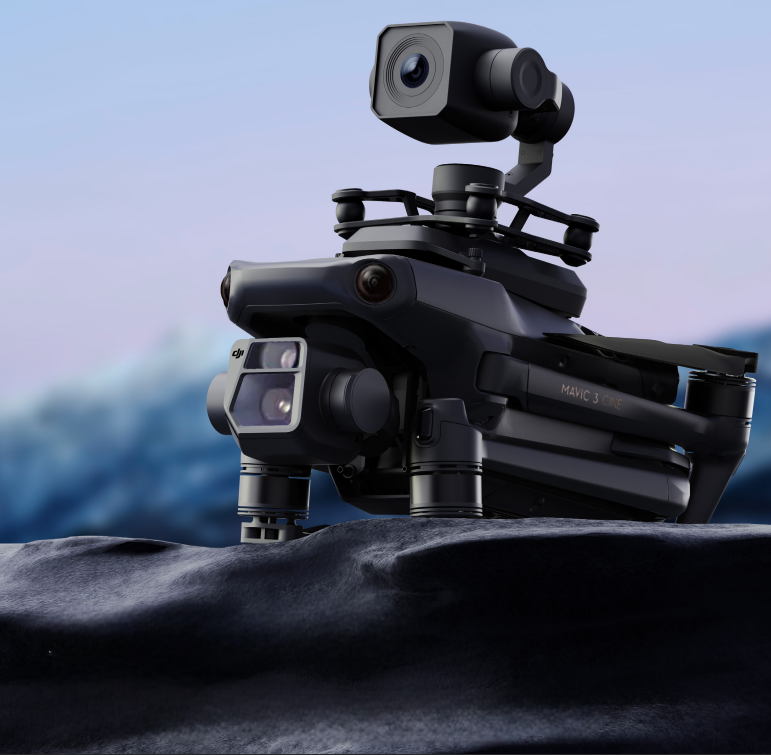
The Mavic 3 Thermal is a compact Oil & Gas inspection drone in Saudi Arabia that delivers high-quality thermal data at a lower operational cost. It supports quick field inspections across refineries and pipeline stations.
Key Specifications and Features
640×512 thermal camera with multiple display modes.
45-minute flight time suitable for routine inspection routes.
Useful for maintenance teams, facility checks, and quick deployment cases.
Lightweight design supports easy transport between inspection sites.
This drone offers strong value for teams that need reliability without high payload requirements.

The EVO II Dual 640T V3 combines high-resolution thermal imaging for Oil & Gas Inspection in Saudi with a powerful 50 MP visual sensor for detailed inspection and documentation.
Key Specifications and Features
360-degree obstacle avoidance for safe flights around industrial structures.
Excellent for facility surveillance and refinery safety inspections.
Dual-sensor setup supports both thermal and high-resolution visual mapping.
Useful for generating detailed inspection reports and digital records.
It fits routine maintenance cycles and safety compliance programs.

The EVO II Enterprise V3 is designed for Oil & Gas inspection workflows in Saudi Arabia that require durability and consistent thermal imaging.
Key Specifications and Features
640×512 thermal camera with strong image clarity.
Suitable for routine pipeline patrol, perimeter monitoring, and facility checks.
42-minute flight endurance supports medium-sized inspection areas.
Additional accessories support loudspeakers, strobes, and beacon modules.
It delivers stable thermal performance for daily inspection tasks across oil and gas facilities.
Thermal imaging is one of the most important tools used in oil and gas drone inspections in Saudi Arabia because it provides accurate temperature mapping across pipelines, refineries, offshore facilities, and remote desert assets. A Thermal Imaging Drone for Oil and Gas in Saudi Arabia helps detect issues early by capturing thermal variations and structural changes that are not visible through standard visual inspections. The capabilities below show why thermal-equipped drones are essential for asset integrity and predictive maintenance.
Thermal imaging plays a key role in pipeline integrity monitoring.
Drones detect temperature variations caused by leaks, insulation failures, and pressure drops.
When paired with gas sensors, drones identify methane zones across long pipeline corridors and remote desert areas.
This supports early detection and reduces the risk of environmental or operational incidents.
Thermal data helps locate hotspots that indicate stress or malfunction.
Flare stacks
Heat exchangers
Overheating electrical panels and transformers
Identifying these hotspots early supports safer refinery operations and prevents unplanned shutdowns.
Many facilities operate in high-temperature and high-risk environments.
FPSOs
Jetties
Port infrastructure
Offshore production units
Thermal drones help teams inspect areas where scaffolding or manned entry is not possible while maintaining continuous operations.
Confined-space inspections carry significant safety risks.
Storage tanks
Pressure vessels
Boilers
Distillation columns
Thermal-equipped drones capture internal temperature differences without human entry, which reduces downtime and improves safety.
Oil and gas assets run 24 hours a day, so inspection tools must operate continuously.
Thermal sensors support 24/7 surveillance because they read heat signatures instead of relying on visible light.
XRTech’s S2 PLUS AI night vision enhances nighttime inspections across pipelines and industrial zones.
This supports uninterrupted monitoring even during low visibility.
Saudi Arabia is adopting autonomous inspection systems for continuous monitoring.
These stations support automated takeoff, landing, real-time data upload, and charging.
They enable fully unmanned missions, which are useful for long pipeline corridors, remote desert assets, and perimeter surveillance.
The adoption of oil and gas drones in Saudi Arabia is growing quickly due to national digital transformation goals, operational efficiency demands, and strong regulatory support. The trends below explain why drone-based thermal inspection has become a standard practice across major energy operators.
Saudi Arabia’s Vision 2030 encourages digital solutions for energy, industrial safety, and environmental monitoring.
Drones support smart inspection programs.
They reduce manual workload and improve data-driven decision-making.
This aligns with the country’s long-term industrial expansion plans.
Saudi Aramco is one of the largest adopters of drone-based inspection systems.
More than 100 drones are already deployed across major facilities.
Drones perform non-destructive testing for corrosion and thickness measurement.
Methane detection drones help monitor emissions and enhance environmental safety.
Drones support digital twin creation for asset integrity modeling.
Aramco’s large-scale adoption sets the standard for the wider sector.
Thermal drones reduce the need for scaffolding, cranes, shutdowns, and rope access.
Inspection costs drop by 40 to 50 percent.
Tank inspections shift from multi-week processes to hours.
This helps operators optimize maintenance budgets.
Long pipelines and remote assets are common in Saudi Arabia.
Drones cover long distances faster than ground teams.
Real-time thermal data improves response to leaks or temperature anomalies.
This increases inspection frequency and reduces operational delays.
Thermal drones support emission monitoring and early leak detection.
Methane detection sensors help operators meet global environmental standards.
Thermal mapping identifies abnormal heat signatures linked to energy loss.
This improves environmental performance across the sector.
The General Authority of Civil Aviation (GACA) provides clear rules for commercial drone operations.
Licensing improves safety and compliance.
A structured framework helps energy companies deploy drones at scale.
Regulatory clarity supports wider adoption across oil and gas zones.
Saudi Aramco has transformed its inspection operations using thermal drones, sensor-equipped UAVs, and automated workflows. These tools reduce inspection time, improve safety, and support advanced data analysis.
Tank inspections that once required weeks of scaffolding and confined-space entry are now completed within hours using drones. This reduces downtime and allows continuous production.
Aramco maps 70 wells in four hours using fixed-wing and multirotor drones. Traditional ground teams could inspect only a few wells per hour, which slowed operations.
Laser-based methane detection sensors help inspect thousands of points across facilities.
Drones capture accurate gas concentration readings.
Thermal imaging highlights temperature changes linked to leaks or pressure issues.
This improves environmental performance and compliance.
Aramco pilots drone-based reforestation programs where drones deploy seeds and monitor mangrove growth.
Drone platforms achieve high planting success rates in desert conditions.
Drones capture visual, thermal, and LiDAR data to build digital twins of critical assets.
Engineers track structural changes over time.
Predictive maintenance becomes more accurate and data-driven.
XRTech Group is a leading provider of Thermal Imaging Drone for Oil and Gas in Saudi Arabia, offering end-to-end solutions that meet the needs of refineries, pipeline networks, offshore facilities, and remote desert assets. Their systems support high-temperature operations, real-time inspections, and continuous monitoring across industrial sites. The reasons below explain why many organizations in the region select XRTech for advanced thermal drone deployments. Contact us for free consultation!
XRTech supplies a full range of enterprise platforms built for industrial-grade operations.
The DJI Matrice series supports precision thermal inspections, NDT payloads, long flight time, and high-temperature performance.
The Autel EVO Max series offers advanced obstacle sensing, strong thermal resolution, and stable navigation in dense refinery areas.
XRTech provides specialized S2 PLUS night vision solutions for 24-hour inspection and perimeter monitoring.
As an authorized distributor for DJI and Autel, XRTech offers genuine hardware, regional warranty, and certified support for all deployments.
This portfolio meets the requirements of pipeline inspection teams, refinery operators, and offshore maintenance units.
XRTech supports autonomous inspection workflows that reduce manual effort and improve inspection frequency.
DJI Dock 2 enables automated takeoff, landing, data upload, and thermal imaging missions without onsite pilots.
Autel EVO Nest supports remote operations across pipelines, oil fields, and remote desert corridors.
5G automated battery swapping stations provide continuous power for long-duration missions.
These autonomous systems enable 24/7 unmanned pipeline patrol, refinery surveillance, and high-frequency thermal monitoring.
This approach supports continuous inspection programs aligned with Saudi Arabia’s Vision 2030 digital goals.
XRTech combines drone data with geospatial intelligence and AI-based analytics.
AI-powered leak detection identifies early temperature anomalies and gas signatures.
InSAR monitoring detects ground movement and pipeline stability issues across long corridors.
Thermal anomaly prediction models help maintenance teams schedule repairs before failures occur.
Integrated satellite and drone intelligence provides multi-layer mapping for pipelines, tanks, and offshore infrastructure.
This improves decision-making and supports long-term asset integrity.
XRTech delivers secure, compliant, and fully supported enterprise deployments across Saudi Arabia.
On-premise data residency ensures sensitive inspection data stays within the client’s environment.
XRTech provides end-to-end mission planning, payload integration, and operator training.
Custom oil and gas inspection workflows match the requirements of refinery operators, pipeline teams, and engineering departments.
This ensures a complete, reliable, and secure deployment for large industrial operations.
Thermal drones have become essential for oil and gas drone inspections in Saudi Arabia because they support safer, faster, and more accurate monitoring across refineries, offshore units, and long-distance pipeline networks. High-resolution thermal sensors, long flight endurance, and autonomous systems help detect leaks, hotspots, and structural changes before they impact operations.
The top drone platforms such as the DJI Matrice series, Autel EVO Max series, DJI M30T, and other enterprise systems provide the capabilities needed for high-temperature and remote desert environments. These drones offer stable thermal imaging, radiometric data, and continuous coverage across critical infrastructure.
XRTech Group serves as a leading provider of geospatial and thermal drone solutions in Saudi Arabia by delivering complete hardware, autonomous systems, AI analytics, and secure enterprise integration. Companies can improve inspection accuracy, reduce operational risk, and build long-term maintenance programs with XRTech’s industrial solutions.
For detailed guidance, workflow design, or a product demonstration, organizations can contact XRTech Group to discuss the right setup for their oil and gas inspection needs.
The DJI Matrice 350 RTK and Matrice 400 are top choices for thermal inspections because they support high temperatures, long flight time, and industrial payloads.
Thermal drones detect temperature variations on the pipeline surface and identify anomalies linked to leaks or pressure changes.
Yes. Industrial drones such as the M300 RTK, M350 RTK, M30T, and EVO Max 4T operate up to 50°C and maintain stable thermal performance.
Yes. Drones inspect flare stacks, pipe racks, boilers, tanks, and heat exchangers without requiring scaffolding or shutdowns.
Thermal drones paired with gas sniffers or laser sensors detect methane zones across pipelines, well pads, and processing units.
Systems like DJI Dock 2 and Autel EVO Nest enable 24-hour unmanned inspection, automated charging, and continuous pipeline surveillance.
Yes. GACA provides licensing rules that support safe commercial drone operations across industrial zones.
Thermal drone inspections reduce inspection costs by 40 to 50 percent and cut tank inspection time from weeks to hours.
Caged or stable multirotor drones inspect tanks, pressure vessels, and boilers without human entry.
Yes. XRTech delivers operator training, workflow design, payload setup, and secure enterprise integration for oil and gas clients.

Satellite imagery has become one of the most powerful tools for understanding our world, capturing every detail of Earth from
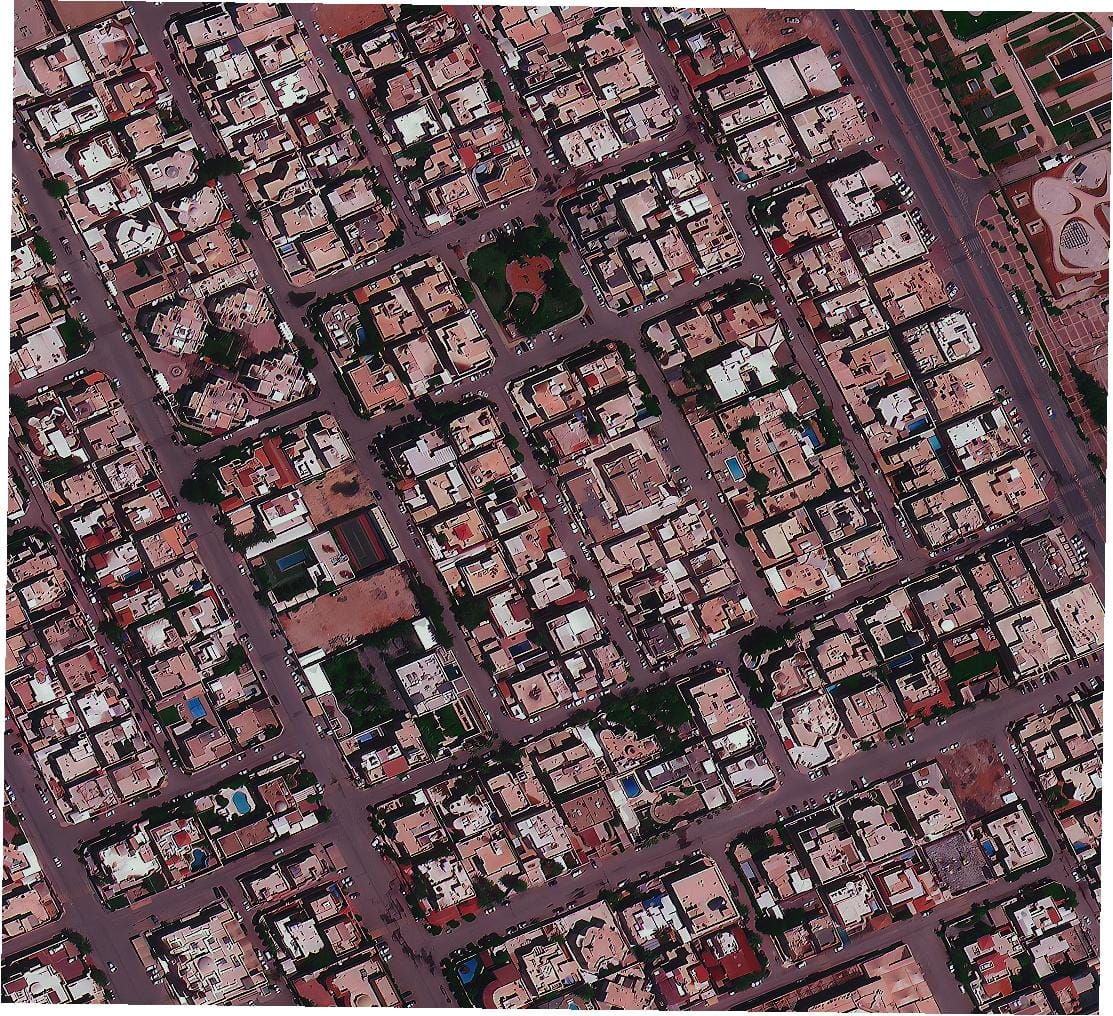
Understanding the Growing Market for Maxar Competitors Satellite imagery and geospatial intelligence have become essential for governments, industries, and research